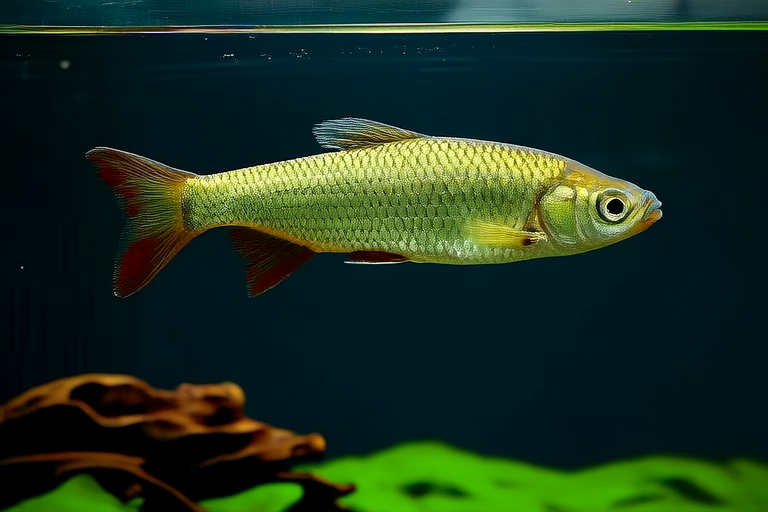The Majestic Arowana: King of Freshwater Aquariums
The arowana, often referred to as the “Dragon Fish” due to its prehistoric appearance and legendary status, reigns supreme in the realm of freshwater aquariums. This remarkable fish is celebrated for its unique characteristics, regal demeanor, and the challenges it presents to enthusiasts who wish to maintain it in captivity. With a history that spans centuries and a reputation that transcends mere pet ownership, the arowana is more than just a fish—it’s a symbol of prestige and power.
Historical Significance and Myths
The arowana’s historical importance is deeply rooted in Asian cultures, where it has been revered for centuries. In Chinese mythology, the arowana is considered a harbinger of good fortune and prosperity. Its ability to leap out of water to catch birds mid-flight has earned it the nickname “Dragon of the Water.” This extraordinary behavior has fueled numerous myths and legends, making the arowana a sought-after addition to any aquarium.
In Malaysia, the arowana is known as the “Dragon Fish,” and it plays a significant role in local folklore. The fish is believed to bring good luck and is often given as a gift during auspicious occasions. These cultural beliefs have made the arowana a highly prized possession, further enhancing its status as a royal fish.
Unique Characteristics
Physically, the arowana is a marvel. It boasts a long, sleek body covered in shimmering scales that reflect light like precious metals. The fish’s elongated jaw, complete with sharp teeth, is designed for catching prey mid-air, a feat that sets it apart from other freshwater species. The arowana’s eyes are particularly noteworthy, offering excellent vision both above and below the waterline, allowing it to spot potential food sources with remarkable precision.
One of the most striking features of the arowana is its ability to jump out of the water. This behavior, while fascinating, requires careful consideration when setting up an aquarium. The fish can leap several feet in the air, making it essential to have a secure cover to prevent escapes and injuries.
Care Requirements
Maintaining an arowana in an aquarium demands a high level of commitment and expertise. The fish requires spacious living conditions, with a minimum tank size of 180 gallons for a single adult. The water quality must be pristine, with regular water changes and efficient filtration systems to ensure optimal health. The temperature should be maintained between 76°F and 84°F, and the pH level should be kept stable between 6.5 and 7.5.
Diet is another critical aspect of arowana care. These fish are carnivorous and require a varied diet consisting of live or frozen foods such as feeder fish, shrimp, and insects. Feeding them once or twice a day is sufficient, but it’s crucial to avoid overfeeding, which can lead to obesity and health issues.
Behavior and Social Interaction
Arowanas are solitary creatures by nature, and they do not thrive in crowded environments. They are territorial and can become aggressive towards other fish, especially those of similar size or species. Therefore, it’s advisable to keep them singly or with larger, non-aggressive companions that won’t be seen as competition for food.
Despite their solitary nature, arowanas can exhibit curious and interactive behaviors. Some owners report that their arowanas respond to their presence, swimming to the front of the tank when approached. This interaction can make the arowana a rewarding pet for those willing to invest time and effort into understanding its needs.
Tips for Aquarium Setup
Setting up an appropriate habitat for an arowana involves several key considerations. First and foremost, the tank should be large enough to accommodate the fish’s size and activity level. A tank measuring at least 7 feet in length is recommended for a single adult arowana. Additionally, the tank should have a sturdy cover to prevent the fish from jumping out.
The substrate should be chosen carefully, as arowanas can be sensitive to certain types of gravel or sand. Smooth, rounded pebbles or large river rocks are ideal, as they are easy to clean and unlikely to cause injury. Decorations should be minimal and strategically placed to provide hiding spots and visual barriers.
Lighting is another important factor. Arowanas are crepuscular, meaning they are most active during dawn and dusk. Providing a dimmer lighting schedule can help mimic their natural environment and encourage healthy behavior. Regular maintenance of the tank, including cleaning the glass, removing debris, and checking equipment, is essential for the well-being of the fish.
Conservation Status
The arowana faces significant threats in the wild, primarily due to overfishing and habitat destruction. Many species of arowana are listed as endangered or vulnerable, prompting conservation efforts to protect these magnificent creatures. Sustainable breeding programs have been established to help preserve the species without depleting wild populations.
As aquarists, we play a vital role in the conservation of the arowana. By choosing captive-bred specimens and supporting ethical breeders, we can contribute to the survival of this iconic fish. Additionally, spreading awareness about the importance of responsible ownership and conservation practices can inspire others to take action.
Conclusion
The arowana truly stands as the king of freshwater aquariums, combining beauty, intelligence, and mystique in one remarkable package. While caring for an arowana requires dedication and knowledge, the rewards of owning such a majestic creature are immeasurable. For those willing to rise to the challenge, the arowana offers a unique and rewarding experience that few other pets can match. As we continue to appreciate and protect this regal fish, we ensure that future generations will have the opportunity to witness its splendor firsthand.
